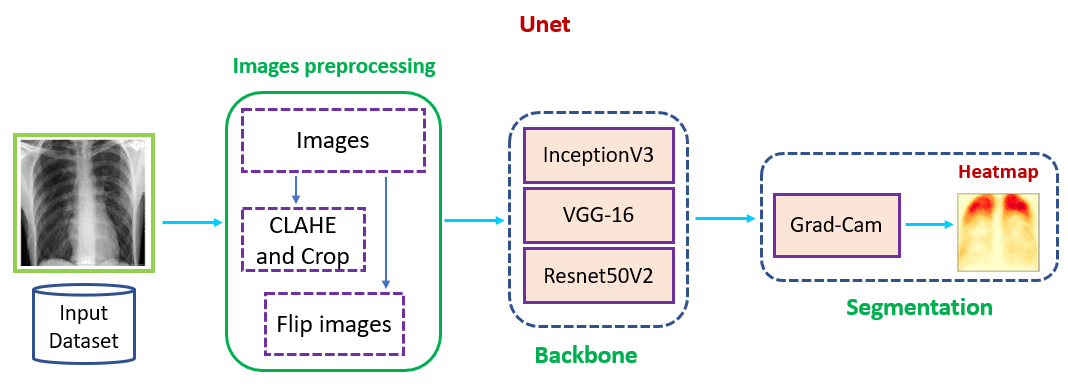Abstract
In a sudden and unprecedented event, our world faced a historic struggle against a novel coronavirus, SARS-CoV-2, which originated in Wuhan, China, in December 2019. This virus, named COVID-19, rapidly spread to neighboring countries and, by March 2020, was declared a global pandemic by the World Health Organization (WHO). Recent studies indicate that COVID-19 can lead to pneumonia, with common symptoms including high fever, dry cough, and fatigue, along with possible loss of taste, sore throat, and skin rashes. Severe cases, particularly in individuals with weakened immune systems, can result in complications such as difficulty breathing, chest pain, and decreased mobility. This research focuses on developing a system for detecting COVID-19-induced lung damage using deep learning techniques based on architectures like DenseNet, VGG-16, ResNet, and U-Net. The system aims to enable rapid and accurate diagnosis, reducing the burden on healthcare providers, facilitating early detection, and preventing community spread. Despite challenges due to limited experience and knowledge, the project has made significant progress, including data collection from Kaggle, preprocessing using CLAHE and image flipping, feature extraction, segmentation, and classification. The study provides experimental results and evaluates the performance of DenseNet, U-Net, ResNet, and VGG-16 models in terms of accuracy, loss, F1 score, and training time. Contributions from this research offer valuable insights for improving the detection and management of COVID-19 lung damage.
Introduction
The name coronavirus is derived from Latin, where "corona" means "crown" or "aura". The virus has spikes that surround the outside, which interact with receptors on cells, in a mechanism similar to keys and locks, thereby allowing the virus to penetrate inside. Some people who recover from severe COVID-19 may experience adverse multi-organ effects or autoimmune disease for a long time with symptoms for weeks or months. Not only manifested by the above clinical symptoms, patients may also appear subclinical abnormalities such as prolonged elevation of heart enzymes, blood glucose disorders, thyroid hormone disorders, decreased glomerular filtration; respiratory dysfunction (decreased pulmonary diffusion, limitation of lung capacity; imaging abnormalities, pulmonary fibrosis, bronchiectasis) ventricular dysfunction via echocardiography.
Proposed Method


